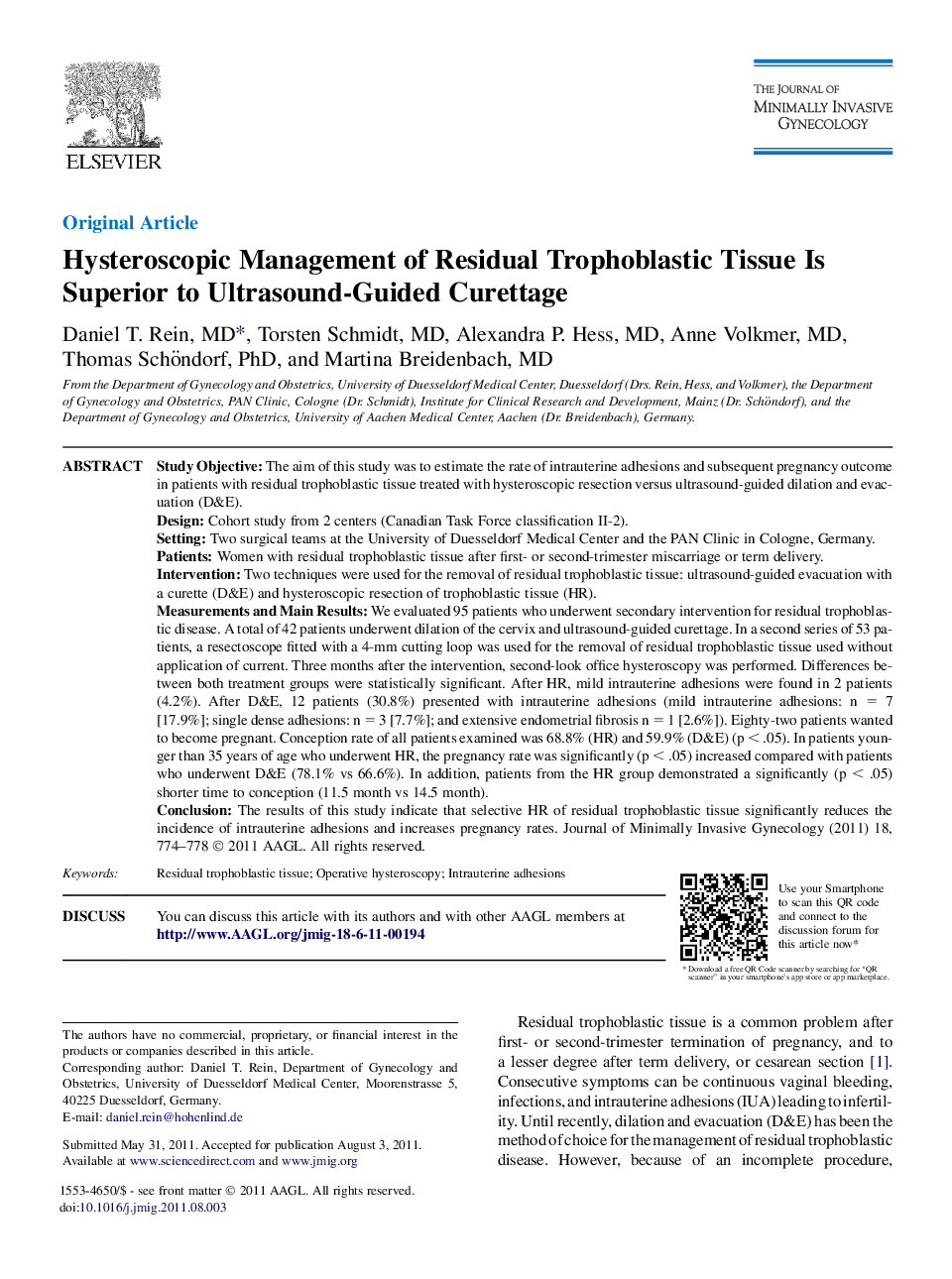| کد مقاله | کد نشریه | سال انتشار | مقاله انگلیسی | نسخه تمام متن |
|---|---|---|---|---|
| 3962170 | 1255642 | 2011 | 5 صفحه PDF | دانلود رایگان |

Study ObjectiveThe aim of this study was to estimate the rate of intrauterine adhesions and subsequent pregnancy outcome in patients with residual trophoblastic tissue treated with hysteroscopic resection versus ultrasound-guided dilation and evacuation (D&E).DesignCohort study from 2 centers (Canadian Task Force classification II-2).SettingTwo surgical teams at the University of Duesseldorf Medical Center and the PAN Clinic in Cologne, Germany.PatientsWomen with residual trophoblastic tissue after first- or second-trimester miscarriage or term delivery.InterventionTwo techniques were used for the removal of residual trophoblastic tissue: ultrasound-guided evacuation with a curette (D&E) and hysteroscopic resection of trophoblastic tissue (HR).Measurements and Main ResultsWe evaluated 95 patients who underwent secondary intervention for residual trophoblastic disease. A total of 42 patients underwent dilation of the cervix and ultrasound-guided curettage. In a second series of 53 patients, a resectoscope fitted with a 4-mm cutting loop was used for the removal of residual trophoblastic tissue used without application of current. Three months after the intervention, second-look office hysteroscopy was performed. Differences between both treatment groups were statistically significant. After HR, mild intrauterine adhesions were found in 2 patients (4.2%). After D&E, 12 patients (30.8%) presented with intrauterine adhesions (mild intrauterine adhesions: n = 7 [17.9%]; single dense adhesions: n = 3 [7.7%]; and extensive endometrial fibrosis n = 1 [2.6%]). Eighty-two patients wanted to become pregnant. Conception rate of all patients examined was 68.8% (HR) and 59.9% (D&E) (p < .05). In patients younger than 35 years of age who underwent HR, the pregnancy rate was significantly (p < .05) increased compared with patients who underwent D&E (78.1% vs 66.6%). In addition, patients from the HR group demonstrated a significantly (p < .05) shorter time to conception (11.5 month vs 14.5 month).ConclusionThe results of this study indicate that selective HR of residual trophoblastic tissue significantly reduces the incidence of intrauterine adhesions and increases pregnancy rates.
Journal: Journal of Minimally Invasive Gynecology - Volume 18, Issue 6, November–December 2011, Pages 774–778